An academic press, also known as a university press, is a publishing house associated with a university or a scholarly institution. Its purpose is to publish and disseminate academic research and scholarship. Academic presses are centres of scholarly discourse and knowledge dissemination and play a pivotal role in advancing scholarship.
This comprehensive introduction explores everything you should know about academic presses: their historical evolution, key characteristics and how to publish with them.
- Key characteristics
- History
- Academic press vs traditional publishing and self-publishing
- Academic press vs for-profit academic publisher
- Publishing with an academic press
- Choosing an academic press
Key characteristics of an academic press
- Scholarly focus: Academic presses specialise in publishing books, journals and other scholarly works. These publications often include original research, theoretical studies and comprehensive reviews.
- Peer-review process: Works published by academic presses typically undergo a peer review. During this process, experts in the relevant field evaluate the manuscript before publication. This ensures the quality and credibility of the published scholarship.
- Non-profit orientation: Many academic presses operate on a non-profit basis, focusing on advancing knowledge and education rather than generating profit. They often receive financial support from their affiliated institutions.
- Diverse disciplines: Academic presses publish works across various academic fields, including the humanities, social, natural or medical sciences.
- Educational and research support: By providing access to high-quality research and scholarship, academic presses support the educational and research missions of their affiliated universities.
The oldest academic presses
Several academic presses have long and storied histories, tracing their origins back several centuries. Here are some of the oldest academic presses:
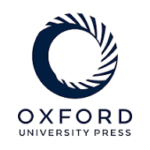
Oxford University Press (OUP)
Its first book was printed in Oxford in 1478, with the OUP officially granted the legal right to print books by decree in 1586. Today, OUP is one of the oldest and largest university presses in the world. Initially, it was a printing operation within the University of Oxford. Later, it evolved into a leading academic publisher with a global reputation for scholarly excellence.

Cambridge University Press (CUP)
CUP is the world’s oldest publishing house and the second-largest university press after OUP. King Henry VIII granted it a patent in 1534. Since then, it has played a significant role in academic publishing, producing influential works across a wide range of disciplines.
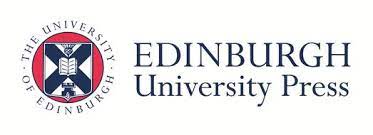
University of Edinburgh Press
Established by the Town Council of Edinburgh in 1693, the University of Edinburgh Press is one of the oldest academic presses in Scotland. It has a long history of publishing scholarly works and has contributed significantly to Scottish literature and academic research.
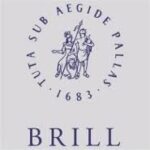
University of Leiden Press (Brill)
Brill, established as a print shop in 1683, became closely associated with Leiden University and became one of the world’s leading academic publishers. It specialises in humanities and social sciences and is known for its prestigious scholarly publications.
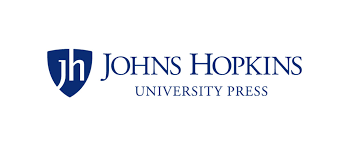
Johns Hopkins University Press (JHUP)
It may not be as old as some European academic presses, since JHUP was founded in 1878. Originally, it was the publishing arm of Johns Hopkins University, making it one of the oldest university presses in the United States. JHUP has been committed to publishing high-quality scholarly works and advancing knowledge across various academic disciplines since its inception. Initially focusing on classics and political science, the press expanded its publishing programme to encompass a wide range of fields over the years.
What is the difference between academic press and traditional publishers or self-publishing?
The primary differences between academic presses, traditional publishing and self-publishing lie in their objectives, processes and target audiences. In short, academic presses prioritise scholarly research and academic discourse, traditional publishing focuses on producing commercially viable books for a general readership, and self-publishing empowers authors to independently publish their work with flexibility and control. Each approach offers distinct advantages and considerations depending on the author’s goals and the nature of the content.
Academic press
Objective: Academic presses focus on disseminating scholarly research and academic knowledge. Their primary goal is to contribute to advancing knowledge within specific academic disciplines.
Process: Academic presses typically employ a rigorous peer review process to evaluate the quality and validity of scholarly works before publication. This ensures that published material meets high academic standards.
Target audience: Academic press publications target scholars, researchers, students and professionals in specific academic fields.
Traditional publishing
Objective: Traditional publishing encompasses various genres and subjects in fiction and non-fiction. The primary aim is to produce commercially viable books that appeal to a broad audience.
Process: Traditional publishers typically acquire manuscripts through literary agents or direct submissions. Before publication, manuscripts undergo editorial review, editing and design; later the publisher advertises in on the market.
Target audience: Traditional publishing targets general readership, aiming to reach a broad market of book buyers through bookstores, online retailers and other distribution channels.
Self-publishing
Objective: Self-publishing allows authors to independently publish their work without the involvement of a publisher. The primary goal is to retain creative control and ownership of the publishing process.
Process: In self-publishing, authors oversee all aspects of the publishing process, including editing, formatting, cover design and distribution. Authors can choose from various self-publishing platforms to make their books available in digital and print formats.
Target audience: Traditionally, self-published authors often targeted niche audiences or specific interest groups. Nowadays, with the rise of self-publishing, some self-published works achieve commercial and global success.
What is the difference between an academic press and an academic for-profit publisher?
The main differences between academic presses and for-profit academic publishers like Springer, Wiley and Elsevier lie in their ownership structure, business models and, sometimes, their publication focus. Although both contribute to scholarly publishing, academic presses often prioritise scholarly impact and may operate on a non-profit or mission-driven basis. In contrast, for-profit publishers are profit-driven entities with a broader range of publications and revenue streams.
Ownership and structure
- Academic presses are often affiliated with universities or scholarly institutions and may operate on a non-profit or mission-driven basis. They typically prioritise scholarly contributions and advancing knowledge within specific academic fields.
- For-profit academic publishers are privately owned companies that operate with the primary goal of generating profit for shareholders or owners. While they may have academic divisions or imprints, their overarching structure is profit-driven.
Publication focus
- Academic presses typically publish scholarly works, including monographs, edited collections and academic journals. They often prioritise peer-reviewed research and academic rigour, aiming to advance knowledge within specific academic disciplines.
- For-profit academic publishers may have a broader publication focus, including scholarly and professional works. In addition to academic journals and books, they may publish textbooks, reference works and trade publications across various subject areas. While they also prioritise academic quality, commercial viability may be more significant in their publication decisions.
Peer review and editorial processes
- Academic presses typically maintain rigorous peer review processes to ensure the quality and integrity of scholarly works before publication. Editorial decisions are often guided by academic expertise and the potential scholarly impact of the work.
- For-profit academic publishers also utilise peer review processes for scholarly works, but editorial decisions may be influenced by commercial considerations such as market demand, potential sales revenue and profitability.
How to publish a book with an academic press?
Publishing a book with an academic press typically involves several stages, each essential for ensuring the quality and success of the final publication. The academic publishing process includes the following processes:
- proposal submission
- proposal review
- contract negotiation
- writing
- peer review
- editing
- design and layout
- indexing
- distribution and sales
- marketing and promotion
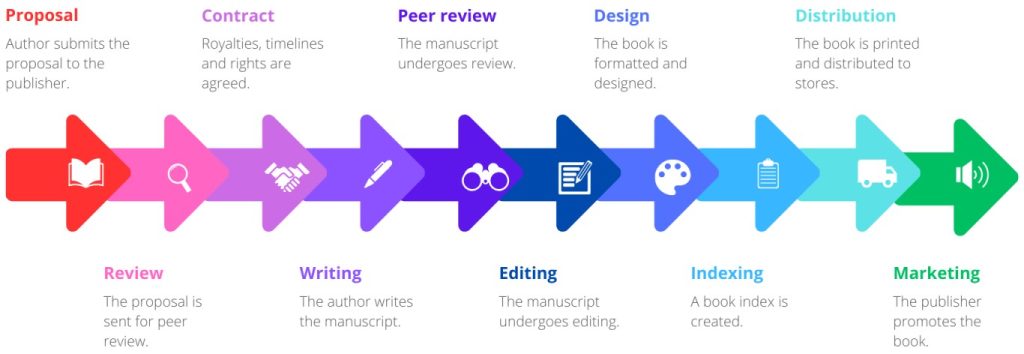
1 Proposal submission
The process begins with the author submitting a detailed book proposal. This document outlines the book’s content, objectives, target audience and scholarly significance. A typical proposal includes a synopsis, chapter outline, sample chapters and the author’s qualifications. It demonstrates the relevance of the work to the press’s publishing scope and audience.
2 Proposal review
Once the proposal is submitted, the academic press initiates a review process. Internal editors assess the proposal for its suitability, originality and alignment with the press’s mission. If it meets these criteria, the proposal undergoes a more rigorous peer review, where subject-matter experts evaluate its academic merit and potential contribution to the field.
3 Contract negotiation
If the proposal passes the review process, the academic press offers a publishing contract. This stage involves negotiations between the author and the press regarding terms such as royalty rates, copyright ownership, publication rights and the timeline for delivering the manuscript. The contract outlines the responsibilities of both the author and the publisher throughout the publishing process.
4 Writing and manuscript preparation
Once the contract is signed, the author completes the manuscript based on the agreed timeline. This may involve refining chapters, incorporating feedback from the proposal review and ensuring the manuscript meets the press’s academic and stylistic standards. Authors may also seek external feedback from peers during this stage to enhance the quality of the manuscript.
5 Peer review
After the manuscript is submitted, it undergoes a formal peer review process. Experts in the relevant field assess the manuscript’s scholarly value, methodology and contribution to the academic discourse. The feedback from reviewers helps the author refine and improve the manuscript before final acceptance. This review ensures that the work meets high academic standards.
6 Editing
Following peer review and approval, the manuscript enters the editing stage. This process typically involves multiple rounds of editing, including developmental editing, copyediting and proofreading. Developmental editing focuses on improving the book’s structure, coherence and flow, while copyediting addresses grammatical and stylistic issues. Proofreading involves a final check for any minor errors before the manuscript moves into production.
7 Design and layout
Once the manuscript is approved, the design and layout stage begins. The academic press’s production team formats the text, designs the cover and selects typography that aligns with the book’s content and intended audience.
8 Indexing
An important part of the final stages of book production is creating an index. Indexing ensures that readers can easily navigate the book and find specific topics or concepts. Some academic presses provide professional indexing services, while others may ask the author to prepare the index or hire an external indexer.
9 Distribution and sales
Once the book is printed and finalised, it enters the distribution phase. The press distributes the book to bookstores and libraries. Academic presses often have established distribution channels to ensure the book reaches its target audience of scholars and students.
10 Marketing and promotion
The academic press’s marketing team promotes the book through various channels, including academic conferences, review journals, newsletters and social media. The goal is to generate awareness and interest among scholars, libraries and students. The author may also be involved in promotional activities, such as giving talks or writing blog posts.
How to choose an academic press to publish a book with?
Choosing the right academic press to publish a book with is a crucial decision that can impact your work’s visibility, credibility and success. Here are some steps to help you choose an academic publisher:
- Identify your goals: Consider your goals for publishing the book. Are you primarily interested in reaching a specific academic audience, gaining tenure or promotion or achieving broader recognition and impact? Clarifying your goals will help you prioritise the factors most important in selecting a press.
- Research academic presses in your field: Identify those specialising in publishing books within your field or discipline. Look for presses that have published works similar to yours or are known for their expertise in your study area.
- Review publication lists and catalogues: Review the publications and catalogues of academic presses you are considering. Look for presses that publish books similar to yours regarding topic, scope and methodology. Moreover, pay attention to the quality and diversity of their publications.
- Examine contract terms and royalties: Review the contract terms and royalties each academic press offers. Consider factors such as publication timeline, rights and permissions, royalty rates and any fees or expenses associated with publishing.
- Seek recommendations: Seek recommendations and references from colleagues, mentors and other authors who have published with university presses. Their insights and experiences can guide you in selecting the right press for your book.
- Engage with the press: Engage with representatives from the academic presses you are considering. Attend conferences, workshops and other academic events where representatives may be present. Reach out to editors or acquisitions editors to discuss your project and gauge their interest and enthusiasm.
Key takeaways
Academic presses are vital for advancing scholarly research, offering rigorous peer review, professional editing, and global distribution. Unlike traditional and self-publishing, they prioritise academic impact over profit, and institutions like Oxford and Cambridge University Press have shaped academic publishing for centuries.
By choosing the right press and following the key stages — from proposal submission to final distribution — authors can ensure their work reaches the right audience.
Contact me if you are an academic author looking for editing or indexing services. I am an experienced editor offering free sample edit and an early bird discount.


